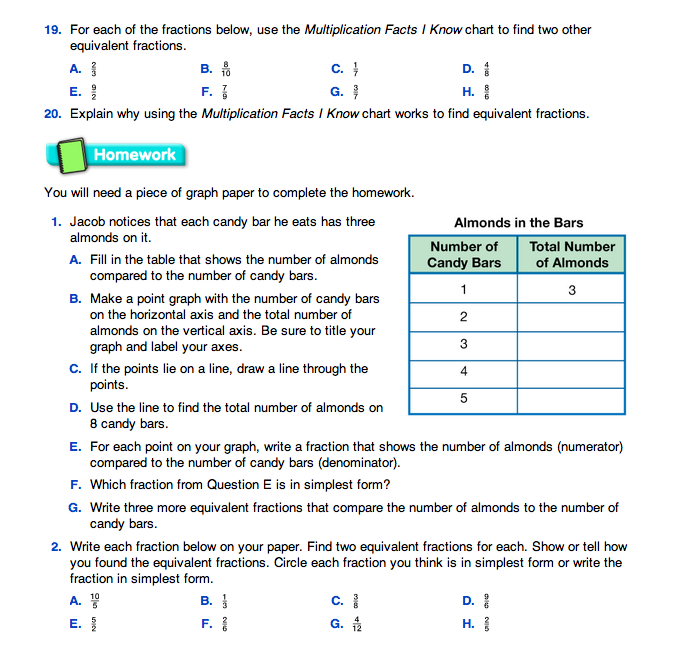Summarize the lesson by using the Multiplication and Division Facts I Know chart in the Student Guide Reference section to find equivalent fractions for the fractions shown in Question 19. Show a display of the multiplication chart.
- How can you use the chart to find an equivalent fraction for 2/3? (Find the twos row. Move any number of spaces to the right to find a new numerator. Move down to the threes row in the same column and find the new denominator.)
- What are some equivalent fractions for 2/3 you can find using this method? (4/6, 6/9, 8/12, 10/15, 12/18, 14/21, 16/24, 18/27, 20/30).
- Why does the chart work for finding equivalent fractions? (Students may respond that if the new numerator and denominator are in the same column, that means they were both multiplied by the same number.)
For Questions 19B, 19D, and 19H the fractions listed are not in simplest form. Students may discover that they can find equivalent fractions in simpler terms by first locating the numerator and denominator in the same column and moving to the left on the chart to find a simpler fraction.
Some students may already be finding ways to reduce fractions into simplest terms in this lesson. Allow these students to explore this concept without introducing formal rules for finding the simplest form of a fraction. Students may need more time to develop the concept of equivalent fractions before thinking about reducing fractions to lowest terms. A formal treatment of reducing fractions will occur in a later unit.













